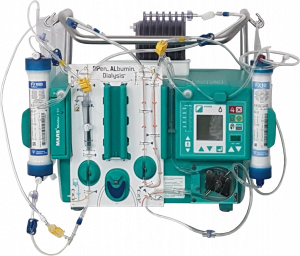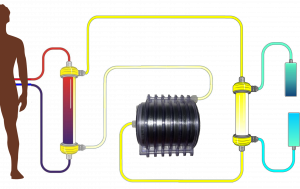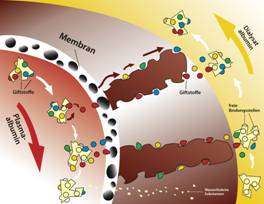The albumin dialysis procedure employs previous plasma exchange or plasmapheresis procedures to remove the toxins from the patient’s blood. However, these “old” methods struggle with undesirable reactions with the exchange surfaces (complement activation, fibrinogen adsorption, allergic reactions) as well as the unwanted removal of important factors from the blood of the ill patient. Consequently, the patient could not be helped to the desired extent at that time.
The principle:
The new albumin dialysis system OPAL separates the patient’s blood through a special blood membrane from an albumin circulation that absorbs the toxins. The purification of this albumin solution takes place via a LowFlux membrane (FX10) and a new adsorber (MaxiCycler). This carbon adsorbent absorbs the otherwise albumin-bound toxins almost completely and thus cleans the albumin molecule. This can then pass through the blood membrane again and absorb new toxins.





